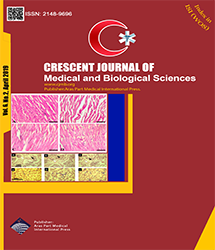
| Original Article | |
| The Incidence of Smoking Among Male and Female Medical Students at Taif University: Analysing the Possible Influences | |
| Amani A Al-Rehaili1, Rana G Zaini2, Ghadi A Ali2 | |
| 1Clinical Laboratory Sciences Department, College of Applied Medical Sciences, Taif University, Taif, Kingdom of Saudi Arabia 2Deanship of Community Service and Sustainable Development, Taif University, Taif, Kingdom of Saudi Arabia |
|
|
CJMB 2019; 6: 140-145 Viewed : 4869 times Downloaded : 3545 times. Keywords : Smoking, Health, Medical students, Taif University |
|
| Full Text(PDF) | Related Articles | |
| Abstract | |
Objectives: Smoking is an essential and unavoidable risk factor for the disease and death worldwide. In addition, smoking is believed to be highly common among medical students and those studying in a clinical field who plan for becoming healthcare professionals, educators, and researchers. Thus, they are considered the prime targets for smoking prevention programs. Accordingly, the present study was designed to measure the prevalence and patterns of smoking among both male and female medical students. More specifically, it aimed to evaluate the reasons for smoking among medical students in order to recommend solutions to reduce or stop this habit. Materials and Methods: This cross-sectional study was conducted during (December) 2017-(January) 2018. An online questionnaire was completed by 249 students attending the main College of Applied Medical Sciences at Taif University in Taif, Saudi Arabia. Results: The results demonstrated that smoking was extremely prevalent among male and female medical students. In this population, the common types of smoking were tobacco (64%) followed by shisha (28%) and electronic cigarettes (8%). Further, based on the results, stress was regarded as the greatest common cause of smoking including 56% of the total students. Conclusions: In general, more practical approaches are required to assist this group of students to reduce tobacco using or even stop their smoking habits. Therefore, the top priority should be to promote anti-smoking programs for medical students, which would definitely help manage the public health issues related to smoking. |
Cite By, Google Scholar
Online Submission System
 CJMB ENDNOTE ® Style
CJMB ENDNOTE ® Style
 Tutorials
Tutorials
 Publication Charge
Medical and Biological Research Center
About Journal
Publication Charge
Medical and Biological Research Center
About Journal
Aras Part Medical International Press Editor-in-Chief
Arash Khaki
Deputy Editor
Zafer Akan


















